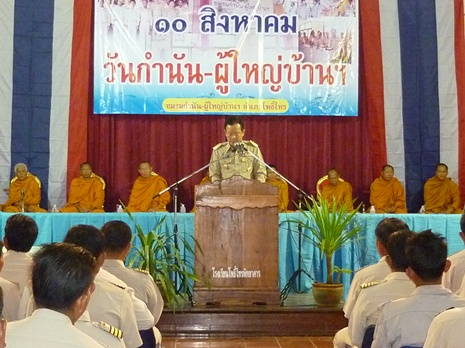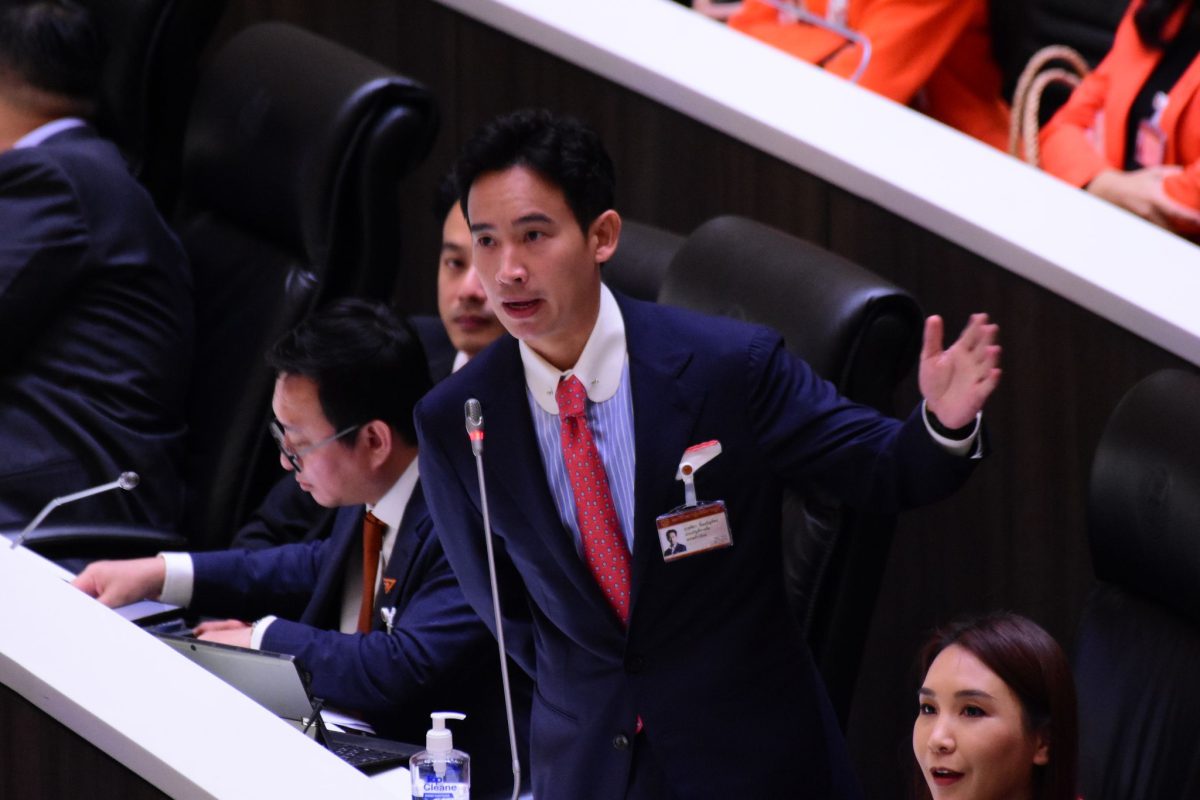The Cabinet’s recent decision to hike the salaries of hundreds of thousands of subdistrict and village leaders may just be a move to undermine the power of local administrative bodies, argues Arunee Santhitiwanich.
On 11 October 2016, the Cabinet issued a resolution to increase the compensation of 291,257 subdistrict and village chiefs, subdistrict medical practitioners, and their assistants. These local-level administrators will receive a salary increase of up to 5,000 baht a month, an annual average total annual budget increase of 803.87 million baht.
The Cabinet resolution is an indication that the government under the National Council for Peace and Order (NCPO) is hoping to undermine local administrative organizations by increasing the roles of subdistrict and village chiefs as agents of the central administration.
But why is the NCPO government increasing salaries of subdistrict and village leaders when it initially vowed to do away with local administration altogether, a plan that was met with much opposition at the local level all across the country?
Subdistrict and village chiefs play two important roles in the era of the NCPO government: they work as political aides and carry out the government’s economic stimulation programs.

August 10th is Subdistrict and Village Headperson Day, which references the same day in 1892, on which King Chulalongkorn began experimenting with the system in which citizens were allowed to elect their village chiefs, who in turn would pick the subdistrict chiefs from among themselves. The experiment was carried out in Ban Ko Bang Pa-In, Phra Nakhon Si Ayutthaya Province.
In the run-up to the recent constitution referendum, subdistrict and village leaders were instrumental as the political arms of the government on the local level. Many readers will recall that during this period the expression of opinion was severely suppressed. The government selected and trained volunteer democracy educators (“A-level, B-level, and C-level teachers”) to help publicize the draft constitution and to encourage citizens to cast their votes in the referendum. The “C-level teacher” category was recruited from subdistrict and village leaders, as well as assistant village chiefs, and village committee members, who promoted the draft among villagers.
It is noteworthy that less than two months before the referendum date, the Department of Provincial Administration approved a 187 million baht budget to furnish subdistrict and village leaders with civil servant uniforms, and provide them with firearms. Many have speculated that this was a way to reward subdistrict and village chiefs for their roles in politics as C-level teachers.
Indeed, it is customary for the Department of Provincial Administration to award firearms to exemplary subdistrict and village headmen every year on Subdistrict and Village Headperson Day, which falls on August 10th. Nevertheless, while civil servant uniforms would usually be awarded only to exemplary chiefs in the past, but this year the department awarded the uniforms to all leaders as a way to boost their morale in following the instructions from the government.
The second role assigned by the government to subdistrict and village chiefs is to lead the economic stimulation programs as part of its subdistrict investment scheme to improve rural people’s quality of life. The project grants five million baht to each subdistrict for a total budget of 32 billion baht, in order to invest funds on the village level to create new jobs across the country.
Kritsada Bunyarat, then the Director General of Department of Provincial Administration, said in an interview, “If the subdistrict and village leaders work well together, it will not only be beneficial to the people, but to the institution of the subdistrict and village chiefs itself. It will become untouchable from those who threaten to do away with it or to change it as [the headperson] would have done good work.”
A possible interpretation of this is that if the five million baht subdistrict fund project does not yield good results, the government might revive the proposal to abolish the positions of the subdistrict and village leaders.
Practical problems could arise after district chiefs, subdistrict and village chiefs received orders to invest the five million baht subdistrict fund, because since the decentralization of power following the 1997 constitution, local administrative organizations are to handle public services with subdistrict and village leaders play only a supporting role.
District-level organizations do not include any civil works technicians, so that projects have to depend on the support of local administrative organizations to design implementation plans, provide approvals, and oversee the urgent construction work according to the government’s order.
Local administrative organizations have become frustrated with this process, since they are usually only given two or three days to design and approve a plan before signing off on the project. In other words, although they are not involved in the execution of the projects, local administrative organizations end up being accountable for them.
Moreover, on 25 October 2016, the Cabinet passed a resolution to approve another project to stimulate the economy in the villages as part of the so-called Pracharat approach for fiscal year 2017. In this project, each village will receive a fund worth 200,000 – 250,000 baht to be managed by the village committee chaired by the village chief.
Earlier, the Institute of Administration Development had already approved a 64.6 million baht budget for field trips and the training of subdistrict and village chiefs to educate them about the mechanisms of Pracharat. [2]
A few questions could be asked about the objectives of these projects to raise the village economic potential. Why not use already existing mechanisms of the community committees, which comprise representatives who come directly from the community itself and are implicated in its interests? Why not use the mechanism of the village and urban community fund committee as their structures lend to accountability with regard to its performance and results, and which already has experience in carrying out projects of this kind?
As the responsibilities of the subdistrict and village chiefs increase under the new projects, the government hopes to motivate them with pay raises.
However, the salaries would go up in a stepwise fashion, with a 200 baht increment for each step. As a reward for good work, subdistrict and village can receive a two-step monthly pay raise (400 baht).
They are eligible for more salary hikes until their total salary increase reaches the 5,000-baht limit. This means that the subdistrict and village headmen will have to keep responding to the central administration’s policies and orders for years until they hit the 5,000-baht cap.
The Cabinet’s decision to hike salaries of subdistrict and village chiefs might just be a strategy to buy the government time and give leaders false hope so that they won’t protest for bigger paychecks.
After all, the resolution says nothing about an implementation date, and the Department of Provincial Administration still has to seek approval from the Bureau of the Budget before it can ask for government approval [3]. For these reasons, it might take at least one year before the pay raise will actually go into effect.
The increasing roles of the subdistrict and village chiefs as outlined above are but one indication that the government seeks to centralize its power. At the same time the government attempts to circumscribe the roles of local administrative organizations, which previously had been responsible for implementing government policies on the local level.
If we consider other factors such as the budget, the command chain, and the interests in the areas, we would come closer to having a clearer and multifaceted picture of the change in the distribution of power in Thailand.
[1] Letter Mor. Tor. 0310.2/14902 dated 30 August 2016
[2] Letter Mor. Tor. 0306.3/03500 dated 3 March 2016
[3] Letter Nor. Ror. 0505/38608 dated 13 October 2016
This article was first published in Thai on November 11, 2016. Translated and edited by The Isaan Record.





